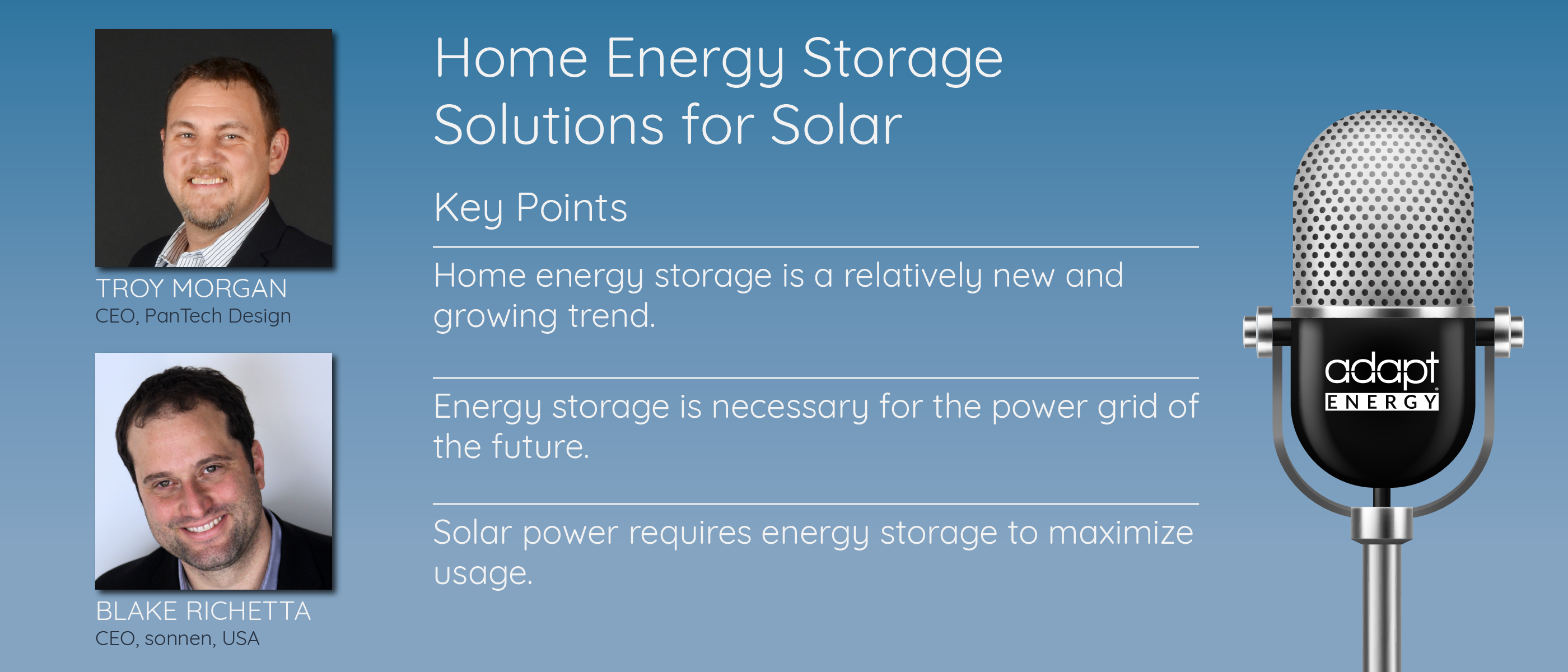

demand response and the grid: special live stream
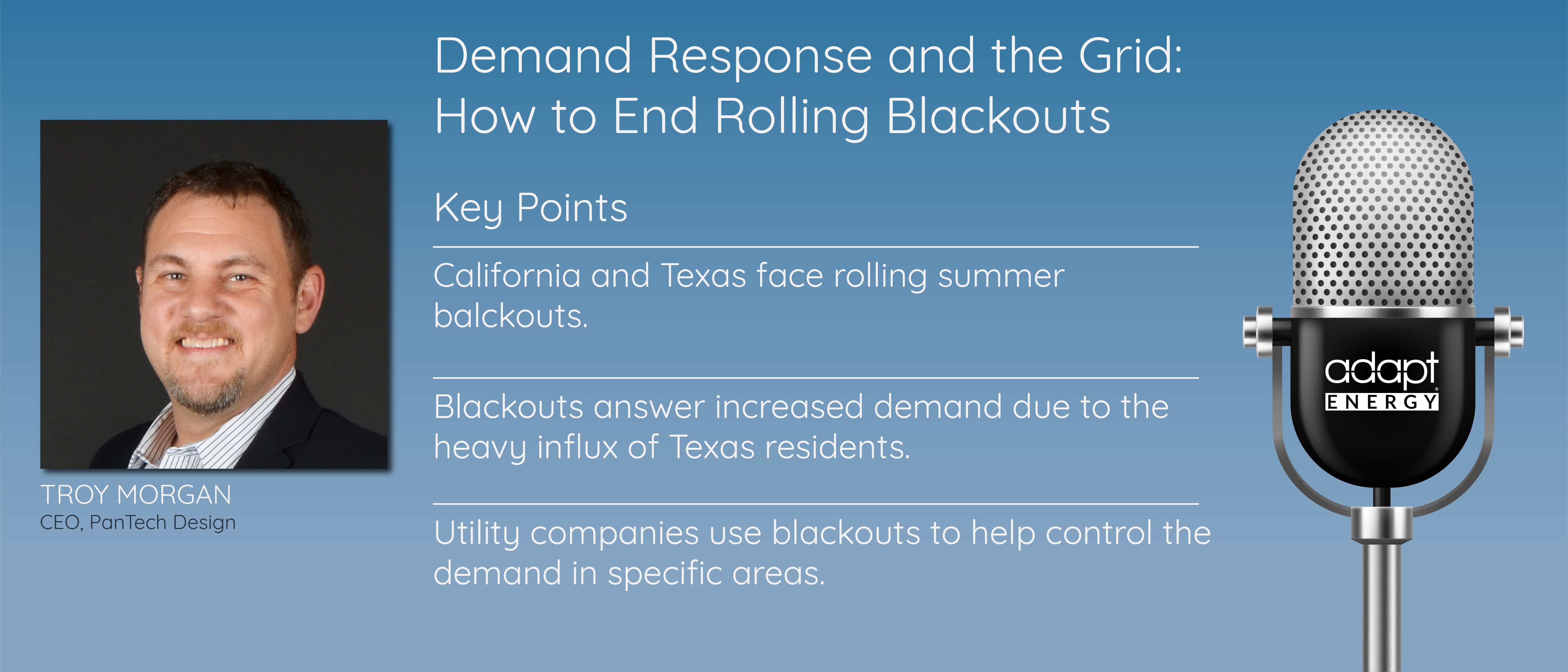
Rolling blackouts are a big topic of conversation right now, with Texas and California facing potential summer blackouts due to heat waves. But most people don't understand why they're necessary and what they achieve. One crucial question surrounding blackouts is whether or not power grids can get to a place where they're not needed.
On this episode of Adapt Energy from Pantech Design, host Tyler Kern talked with Troy Morgan, CEO of Pantech Design, about the rolling blackouts, power grid supply and demand, demand response, and the increased demand on the Texas power grid.
When a consumer goes to turn on the lights, it is often taken for granted. There aren't many questions as to where it comes from or why it works. But, with energy, like most commodities, there is a supply and demand. Unlike the past, currently, the grid gets its supply from numerous sources. Traditionally, it would come from nuclear plants, hydroelectric or fossil fuel-burning plants. Now, solar and wind are added into the mix.
But, when it comes to demand, that's a whole other ballgame. One of the central states that feels this issue is Texas, which was highly publicized during the winter blackouts, and the state will be battling further blackouts in the summer months.
"The state of Texas is increasing its demand in a really crazy way, and it has to do with people moving," Morgan said. "There are a ton of people that are moving into the state of Texas. So, you take that, coupled with the normal things that happen, maintenance and really hot days, and supply being a challenge relative to demand, and you could potentially have a problem on your hands."
living with energy automation
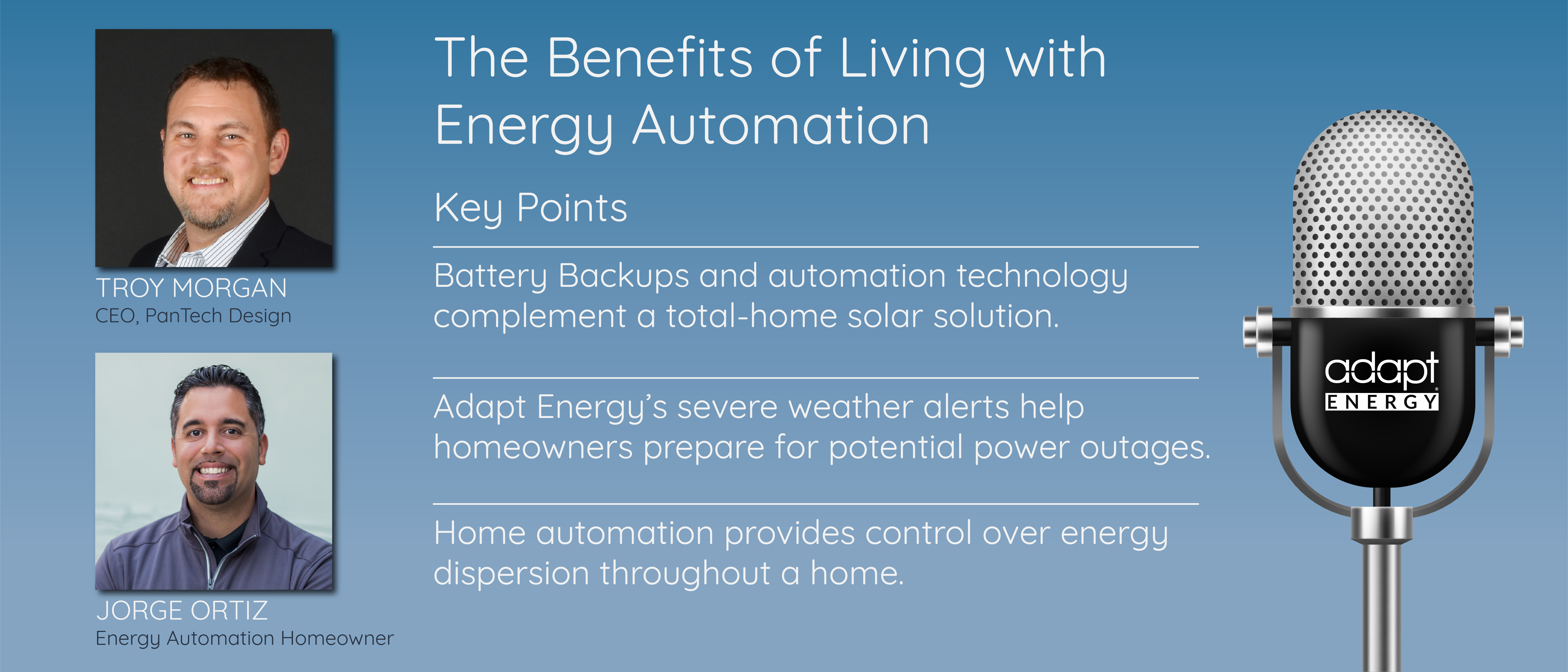
Adapt Energy’s experts and thought leaders bring knowledge and understanding to home automation energy solutions, but Jorge Ortiz brings an additional level to the conversation – his own experience. Ortiz is a Florida homeowner who powers his home through a combination of solar and battery power and the home automation control of Adapt Energy. He shared his perspectives with Troy Morgan, CEO of PanTech Design, and host James Kent.
“It’s crazy here in Florida with afternoon storms and hurricanes,” Ortiz said. “It was always on our radar when we purchased the home to say, ‘Hey, we need some sort of backup solution.’ After researching options, he settled on solar as an essential component for his energy needs.
Ortiz soon realized a battery backup also needed to be part of the equation, because solar power by itself would not keep powering his home in the event of a power outage. “For safety purposes, for the people that work on the power lines, the system needs to shut down to where it’s not feeding power back,” Ortiz said.
While researching his home battery options, Ortiz discovered PanTech and its home automation solutions. Now equipped with Adapt Energy and a Sonnen battery, Ortiz can control his home energy needs and decide how to operate during a power outage. When storms approach, his Adapt Energy system lets Ortiz know to prepare his home by telling the system to begin charging the battery.
“Having a battery is great, but the battery can only power so many things or so much,” Morgan said. Adapt Energy manages the power needs of a home during such emergencies. It can shut down high-power utilities in the house before area outages. The system also allows the homeowner the ability to select which resources to keep powered on during an emergency.
rolling blackouts and microgrids
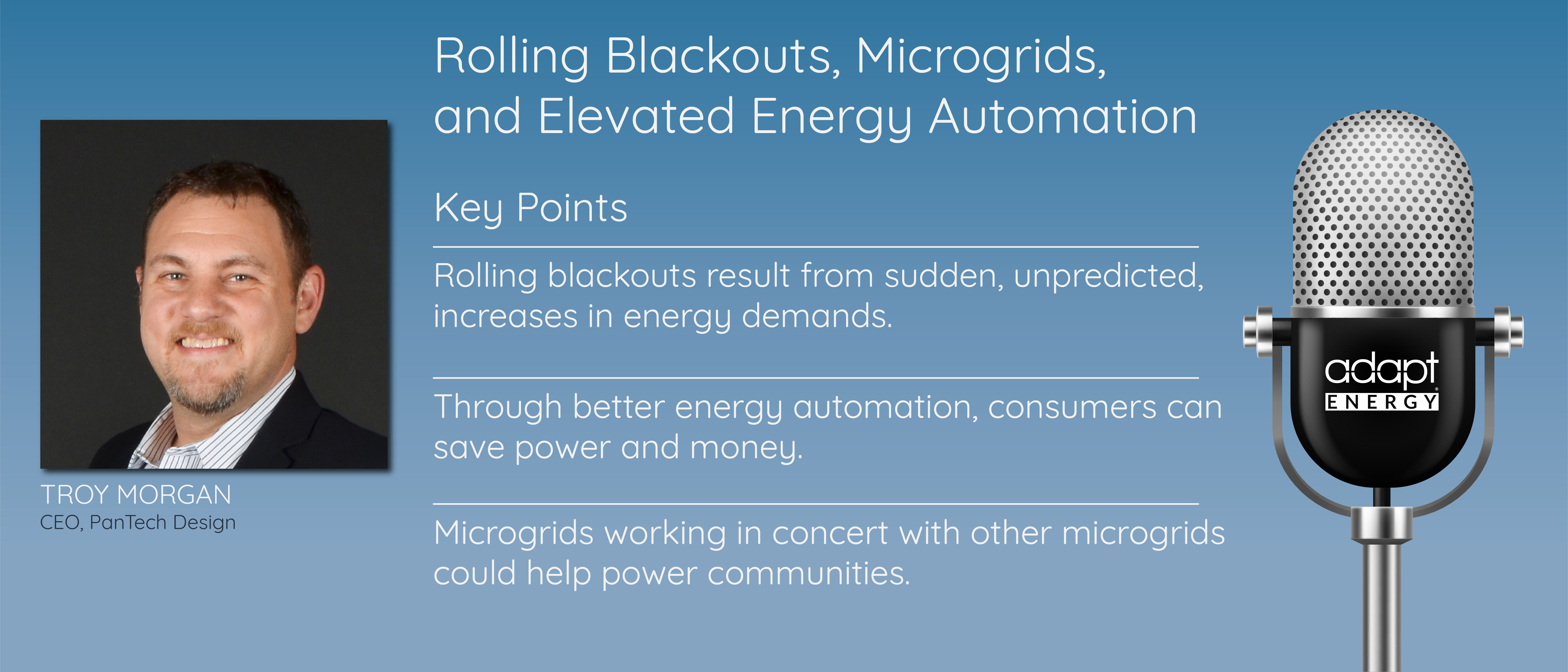
In February of 2021, Texas went through an energy crisis, with many residents experiencing rolling blackouts. PanTech Design CEO Troy Morgan joined host Tyler Kern to talk about this phenomenon, what rolling blackouts are, why they occur and how solutions like microgrids and energy automation can help reduce them.
“You’ll find rolling blackouts happening throughout the United States,” Morgan said. “And it’s unfortunate, because it tends to be based on a first line of defense against an improper predictability on demand.” When weather conditions shift too hot or too cold and consumers begin using more energy than usual to combat these conditions, the predictability of energy demands becomes skewed. “When the utility companies see the demand rising at a rate they weren’t prepared for or expecting and they are getting close to tapping into their reserves, that’s what can start to cause the need for rolling blackouts.” Many additional factors play into rolling blackouts, but the fact is, with energy demands increasing, rolling blackouts are a consequence that people could expect to see more of in the future. So, what are the opportunities to help remedy the situation? Morgan said combating a long-term problem such as rolling blackout begins with education. “It starts with us as consumers of power understanding our impact. Once we understand our impact, we are going to be more likely to seek opportunities to help,” he said. “And the help is not just helping the world and the United States or the utilities; it’s helping ourselves. People don’t realize how much power they use and how much power they waste.” When consumers get educated on the problem, Morgan said, that’s when energy automation solutions come into play. “There are so many things that an energy automaton system can do the consumer can be totally hands-off about, but they aren’t going to be willing to take that leap until they are a little bit more educated about why and how this helps.”Adapt energy system design

How do you design a perfect product?
Although the idea of perfection is a subjective one, when Troy Morgan and Alex Teague envisioned their ideal Adapt Energy system, they knew they wanted it to be a reliable one above all else. Morgan and Teague, who are PanTech Design’s CEO and COO respectively, then began designing their product with the end in mind. They realized, for example, that a reliable product is made of reliable parts. As a result, the Adapt Energy system is made up of “all industrial-grade components.” “There’s a cost associated with that, but we were willing to add that extra cost to have that reliability,” Teague said. “And the solution that we have is made to last probably longer than any of the other components in the whole environment.” “We have more than a hundred systems out there, and we have not had one single component failure – not one,” Morgan added. Although he conceded that this will certainly change over time given the sensitive nature of electronics, he maintained that the position that the company is in today is a reflection of the choices that Teague made during the design process. Another reason for their system’s flawless performance can be seen in PanTech’s quality control process. The company employs a “double QC” check, where Teague himself conducts one final check of every system before it’s shipped out to the end user. “The person who designed and engineered it is also the one testing it to make sure, before it gets shipped, that it’s 100% perfect,” Morgan said. Subscribe to the Adapt Energy podcast on Apple Podcasts and Spotify to explore new ideas in energy automation technology and stay up to date on the latest changes in the industry.home automation and energy management
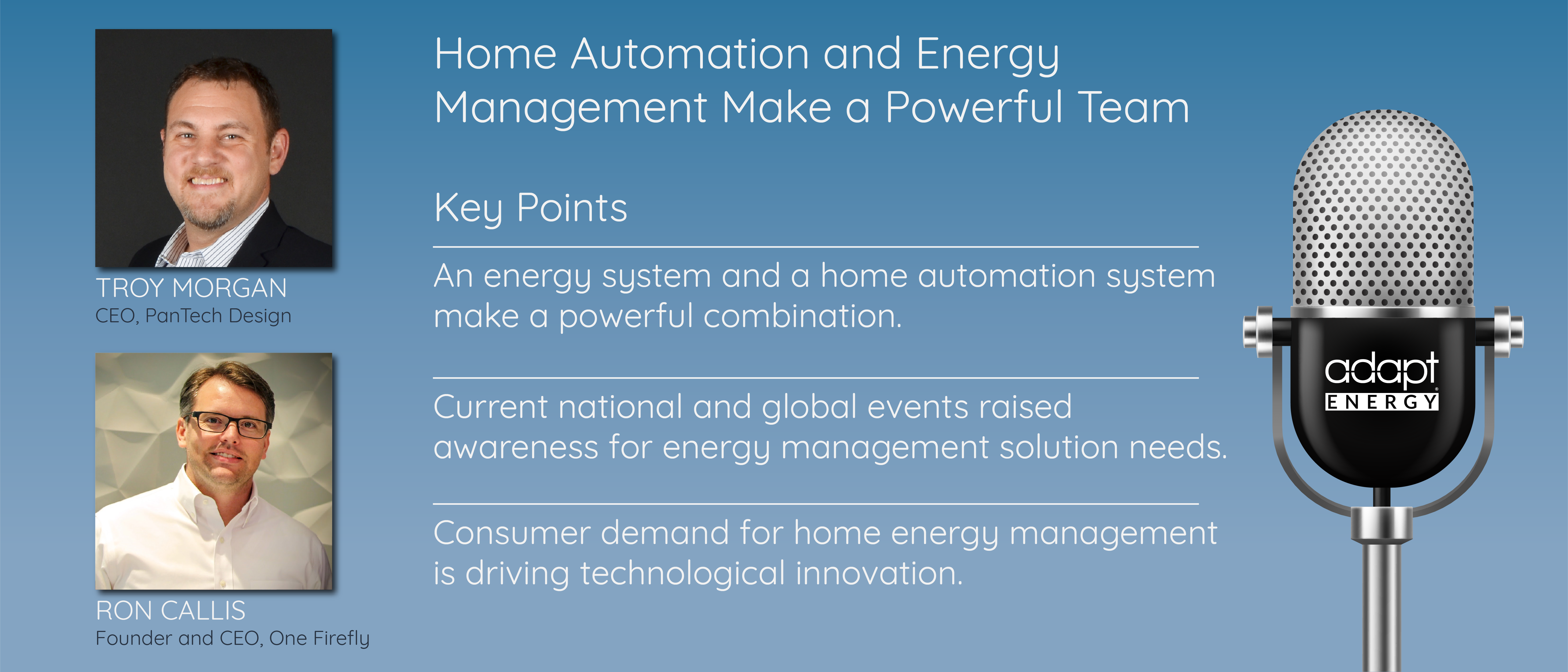
Companies like PanTech Design rely on marketing agencies such as
Ron Callis, Founder and CEO of One Firefly, joined Troy Morgan, Founder and CEO of PanTech Design, to discuss today's home automation and energy management trends. “Once you connect an energy system to a home automation system, you achieve a device-level type of control,” Morgan said. "You can change the dynamics of the whole energy profile of the home by telling the home automation system it’s time to do something, and that home automation system decides what to do." According to Callis, now is a perfect time for home energy companies to enter the home automation market.
“We see well-known brands across the country starting to fully get behind home energy management as a category of discussion. They’re moving product and integrating it into their projects,” Callis said. “I certainly see the market growing quarter over quarter.” With consumers showing a lot of interest in battery storage and other home energy management solutions for their homes, are businesses ready to meet those needs? “Consumers are the ones driving the questions to the developers, the builders, the architects and the people they are working with to build their dreams in terms of their homes,” Morgan said. “And it’s that, I think, that is driving the contractors to learn more and start to look for products that can accomplish what consumers are asking for." A customer may want to have a continual power supply available for their home in case of an outage. But achieving that may not be cost-effective, which is the challenge the industry needs to solve. Companies such as PanTech Design are helping people to accomplish these goals with real technology solutions.
clean and constant power
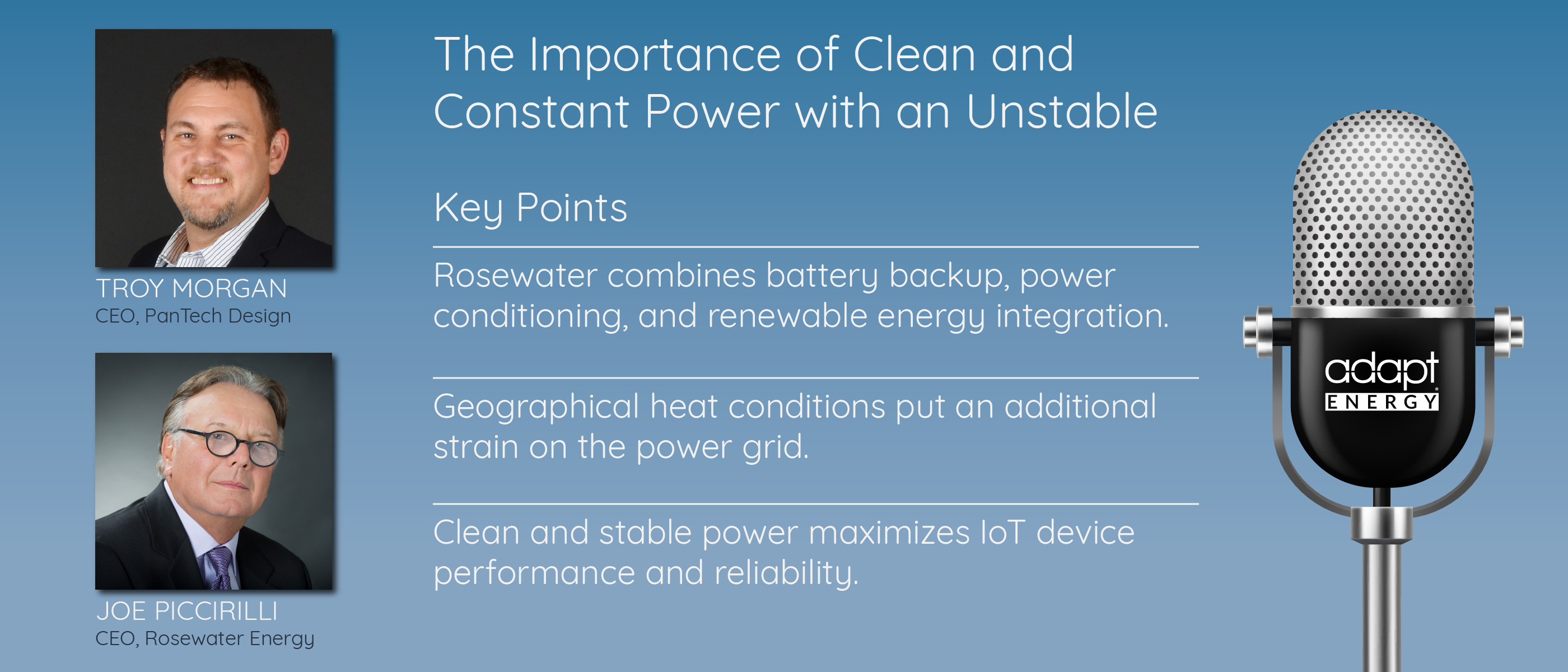
PanTech Design sees the future, and it is one of energy monitoring, load control and ensuring clean and constant power flow for commercial and home consumption.
Troy Morgan, Founder and CEO of PanTech Design, and Joe Piccirilli, Managing Director and CEO of Rosewater Energy Group , popped by Adapt Energy to discuss the importance of maintaining clean and constant power within an unreliable grid.
Piccirilli, a 50-year veteran in the consumer electronics industry, noticed that, as more and more IoT products entered homes over the past decade, dissatisfaction from consumers was not uncommon. But was it the products themselves not functioning correctly, or was it a lack of consistent, clean power reaching those devices to blame?
In 2012, Piccirilli founded Rosewater to solve such power problems.
“[I said], 'I am going to design and build the best, most complete, energy management, power quality device in the business,'” Piccirilli said.
Four years of development and testing later, Piccirilli’s product became a reality.
Morgan pointed out another need for stable, constant and clean power - the enormous stress put on the grid due to warm weather temperatures, especially in extremely hot locations. Coupled with the unexpected increase in home power use due to people working from home during the pandemic, and power grids can get unstable and experience fluctuations and outages.
“When that occurs, and especially now,” Morgan said, “everybody has to use their air conditioners. And when these air conditioners all kick on and stay on for an extended period, people will see the grid go down.”
If populations are growing, home sizes expanding and power needs increasing while power grids age, how can people maximize their power efficiency? One solution is an energy and storage solution designed for residential and light commercial use.
The right unit can protect and enhance the performance of all home and office electronics while providing an uninterruptible power supply with zero transfer time and a large amount of battery backup to ride out power failures.
home energy storage
Troy Morgan, CEO, PanTech Design and Blake Richetta, CEO, Sonnen USA kicked off the first episode of Adapt Energy with a discussion on the rise of home energy storage and why the viability of solar depends on it.
A few years ago, PanTech Design began developing energy automation systems to work within the home energy management space. And Sonnen is a legacy player in the residential energy storage industry at a mere 10 years old. Sonnen uses lithium iron phosphate batteries to connect to the grid and optimize and harmonize solar energy, specifically in residential applications.
“Energy storage is not just a trend,” Richetta said. “It is an essential evolution of the very way that we produce and consume energy. There is no renewable energy transition without energy storage.”
The increasing demand on utility grids has caused more frequent power outages, and today’s customers want uninterrupted power.
“People are looking more toward home battery storage as a method of reducing downtime during these types of outages,” Morgan said.
One of the premier benefits of energy storage systems is maximizing the efficiency of solar and wind energy.
“These types of energy systems are decentralized, flexible and much more resilient,” Richetta said.
The capture of energy at multiple nodes versus one centralized point can help reduce power loss over a large portion of the grid during large-scale power outages.
When it comes to solar energy, Morgan wanted to clear up a misconception.
“People assume, because you have solar power, you have power available all the time," he said. "You are off the grid and don’t have to buy power from the utility company, and if the power goes out, you have power. That is not the case.”
To get the most out of a solar system and utilize the generated power, a home energy storage system is required. An energy storage system allows usage of the generated power by both the home and the grid when power is needed, not when it isn’t.
